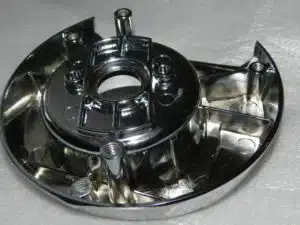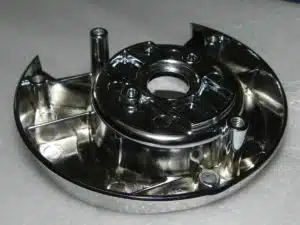Aluminium Die Casting
Aluminum-based amalgams find extensive application across mechanical engineering and various industrial sectors. Employing aluminum die-casting methodologies facilitates the fabrication of diverse components, notably intricate, thin-walled structures. These components serve as pivotal constituents for an array of assemblies and intricately shaped apparatuses.
The finalized aluminum alloy components boast myriad merits, encompassing lightweight properties, commendable mechanical robustness, and formidable resilience against corrosion. Such attributes hold paramount significance within the realm of mechanical engineering, as well as in the realm of household appliances and portable electronic gadgets.
Characteristics of Aluminium Die Casting
The parts are shaped in steel split moulds, in which the molten metal is pushed at 100-200 atm pressure. It is done by a reciprocator with a cold press chamber. Under high pressure finished parts obtain a perfect relief and smoothness.
The aluminium die casting technology makes it possible to produce moulded parts of precision classes 3-5. In most cases cast products do not require additional surface grinding and polishing, which allows to reduce production costs and the amount of waste. If you need surface painting services or surface treatment services to achieve a matte or mirror surface effect, you can also order them in Eurobalt Engineering.
Aluminium die casting is applied in the manufacture of aluminium alloy parts and assemblies reinforced with a more durable material.
Favourable Price and Efficiency
Aluminium alloy die casting is the most cost-effective way to treat material. The manufacturing process is characterized by a high efficiency. Within a few minutes it is possible to produce several cast products using only one mould. Aluminium die casting is the most environmentally-friendly technology as it reduces metal waste.





